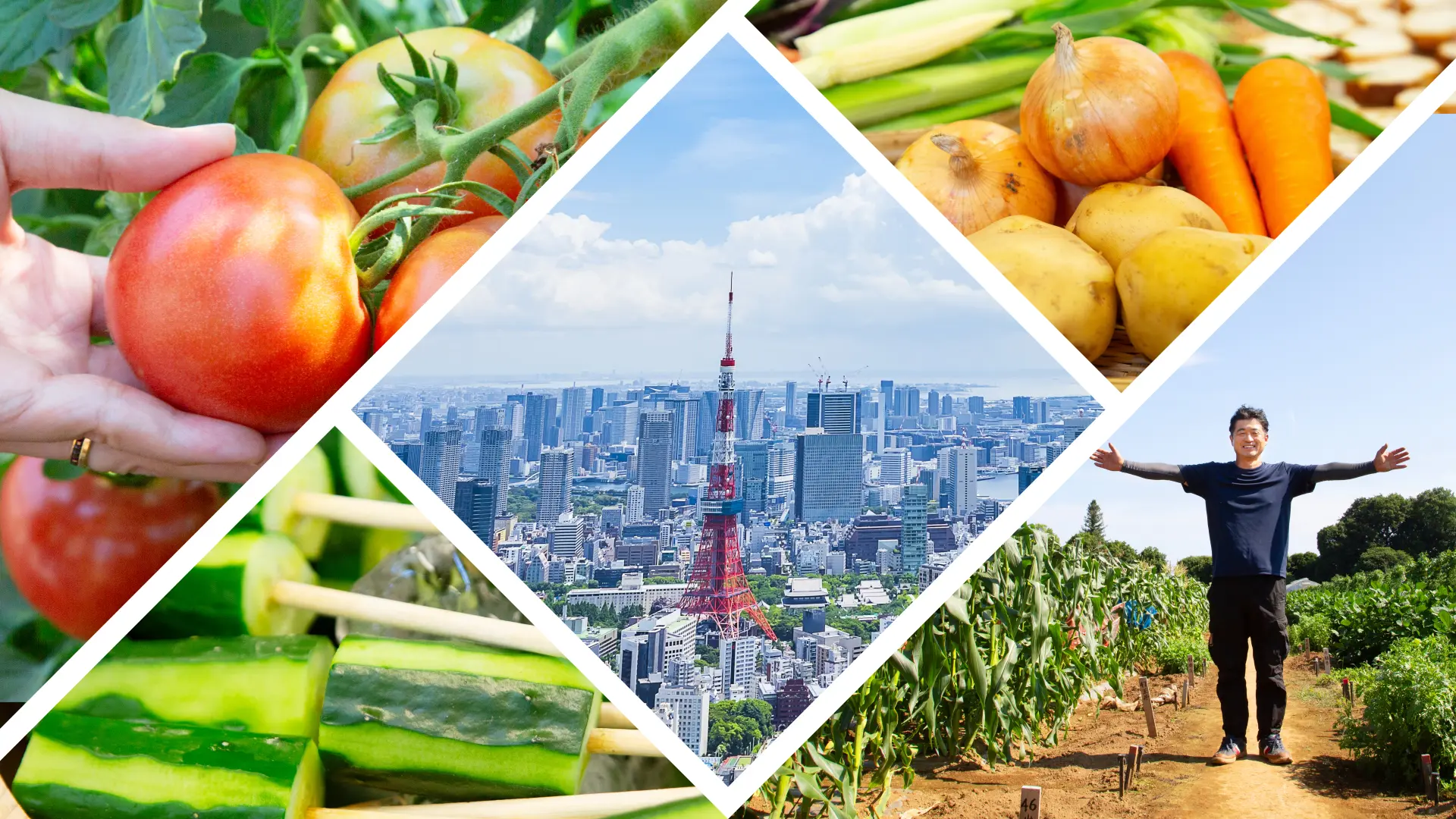
Agriculture Thrives Even in Tokyo, the Metropolis! The Hidden Appeal of “Tokyo Grown Vegetables”
Tokyo is often associated with the image of a bustling metropolis. However, just a short distance from the city center, there are farmland as well as mountains and islands tucked away in residential neighborhoods. In fact, Tokyo is home to diverse natural environments and traditions rooted in history. What is less widely known is that vegetables are grown in fields located right beside urban districts. Why not conscious “Tokyo grown ingredients,” including local vegetables, fish, and meat to fully enjoy Tokyo, a city in rich food culture. This article introduces the characteristics and appeal of Tokyo grown vegetables, along with places where you can visit farms, purchase and savor these vegetables for yourself.
Areas Where Tokyo Grown Ingredients Are Produced
Despite being a city of skyscrapers and lively streets, Tokyo is home to many different forms of agriculture.
As of 2020, the total farmland area was 6,530 hectares, with around 5,000 farming households still engaged in agriculture. Farmland in Tokyo is classified into three categories: urban, mountainous, and island areas.
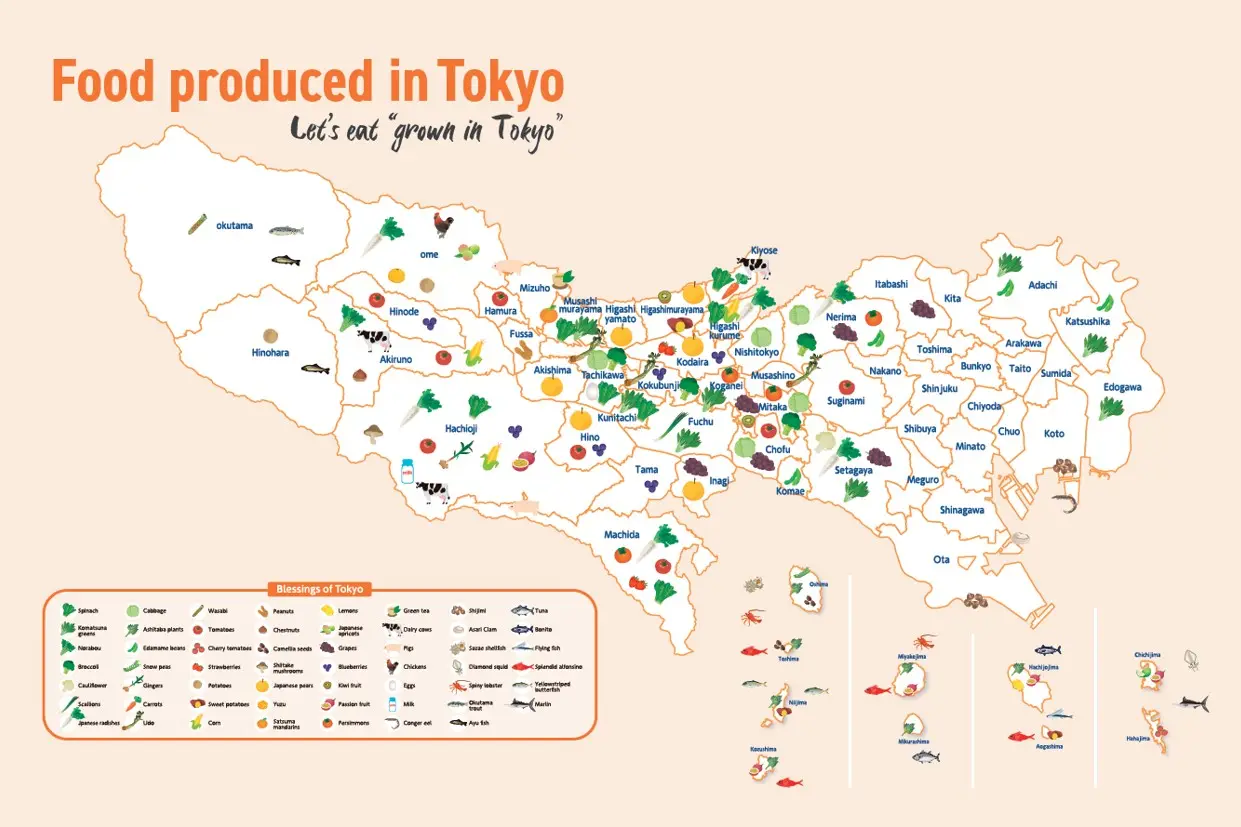
Tokyo is not only composed of urban districts-it also encompasses mountainous regions and islands. By taking advantage of its varied climates and environments, a wide range of “Tokyo grown vegetables” are cultivated. In fact, Tokyo’s agriculture is so diverse that nearly every type of vegetable grown in Japan can be found here.
3 Unique Appeals of “Tokyo Grown Vegetables”
The pride of “Tokyo grown vegetables” lies in their freshly harvested quality and delicious taste. Here, we introduce three unique appeals of vegetables grown in Tokyo.
1. Outstanding Freshness That Lets You Savor the True Flavor of Vegetables
One of the charms of “Tokyo grown vegetables” is freshly harvested produce. Corn and edamame, for example, quickly lose their flavor after harvest, which is why direct sales from farmers are such an advantage. At the same time, vegetables such as komatsuna are also shipped to markets and supermarkets, making their way to both home uses and restaurants. The ability to enjoy seasonal flavors at their peak freshness is one of the greatest appeals of “Tokyo grown vegetables.”
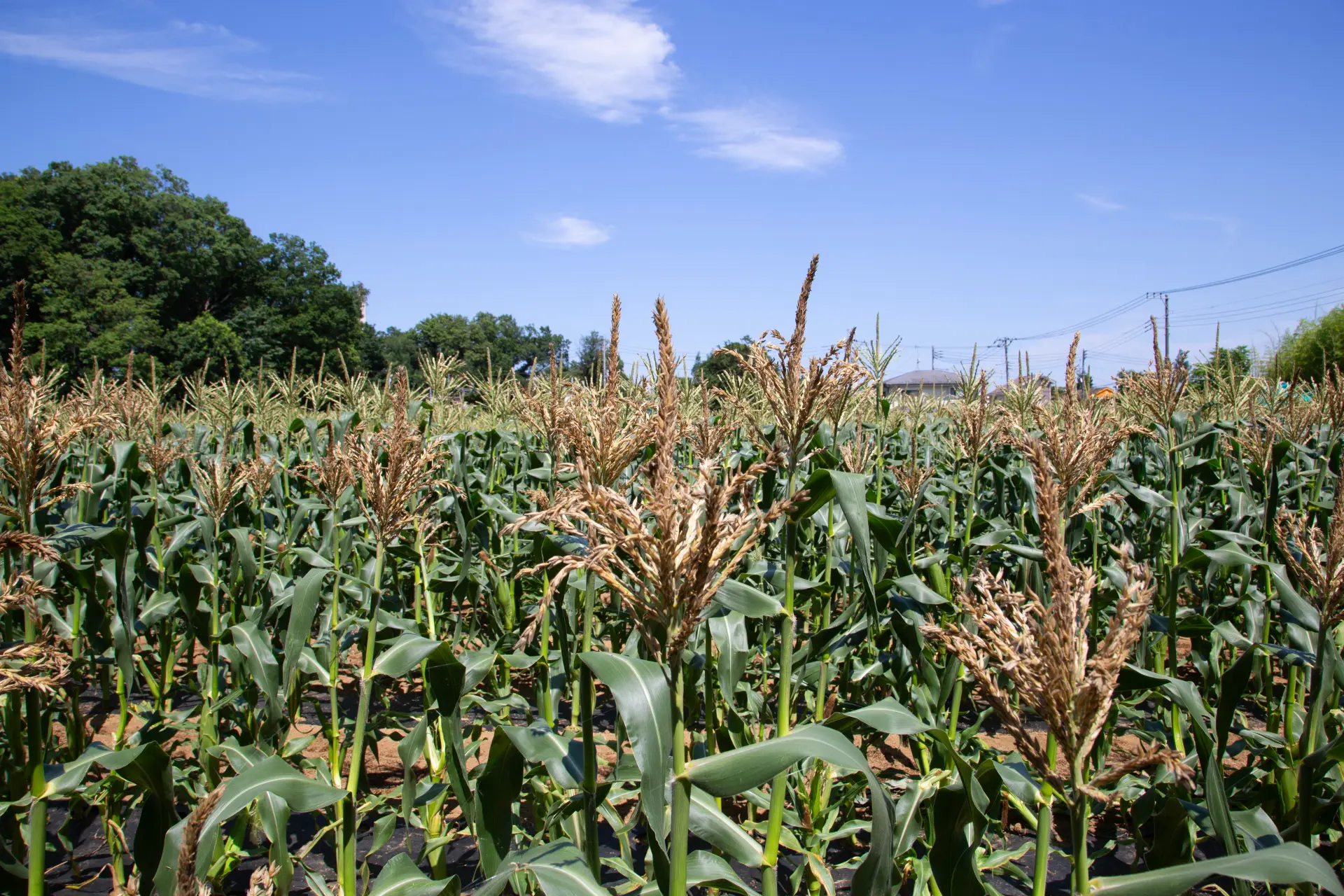
2. Cultivation Focused on Flavor
Farmland in Tokyo is smaller than rural areas, and the mainstream style of farming is high-mix low-volume production. For example, after harvesting spring and summer vegetables, autumn and winter vegetables are planted, allowing for efficient year-round use of the same plots. Although the farmland is small, farmers grow popular vegetables, and since the production areas are located close to the consumer markets, crops are harvested at their peak of flavor and delivered quickly to dining tables. Many farmers choose to grow truly delicious varieties, even if they are somewhat more difficult to cultivate. Tokyo also has a long history as a leading region in the cultivation of vegetables and flowers. Farmers here often succeed in growing vegetables that are considered difficult to cultivate, drawing on their long-standing experience and cultivated expertise. It is this high level of technique that ensures the deliciousness of Tokyo grown vegetables.
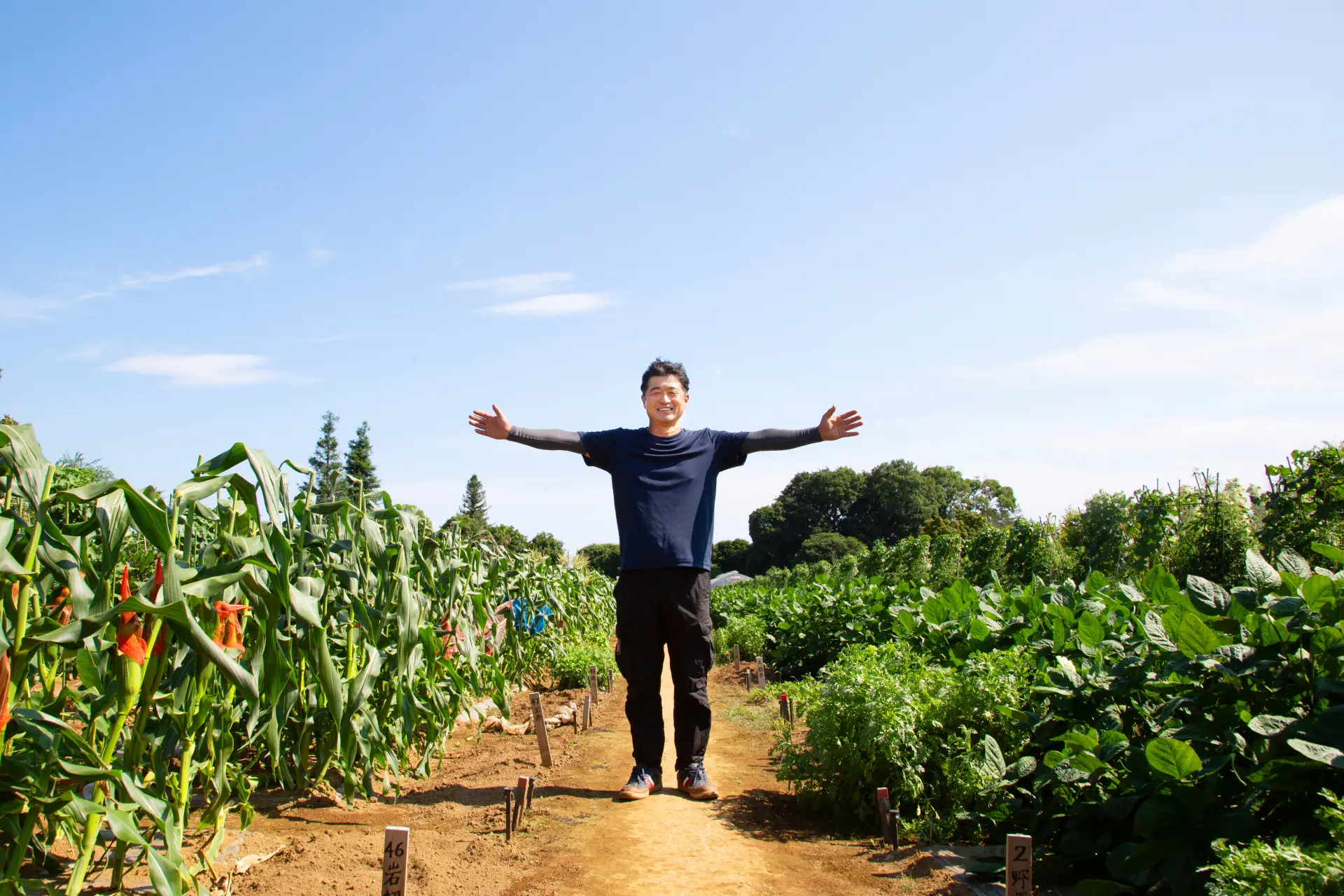
3. Peace of Mind through face-to-face contact
Because the distribution volume of “Tokyo grown vegetables” is relatively limited, they are rarely found in ordinary supermarkets. Instead, they can be purchased directly from farmers or at JA direct sales outlets. At these markets, vegetables often come with the producer’s name or photograph, conveying the responsibility and pride of the farmer. The vegetables on display are carefully grown, with attention to both appearance and flavor. Because many fields are located within residential neighborhoods, farmers are familiar figures to local residents, and their produce is cherished as an integral part of everyday community life.
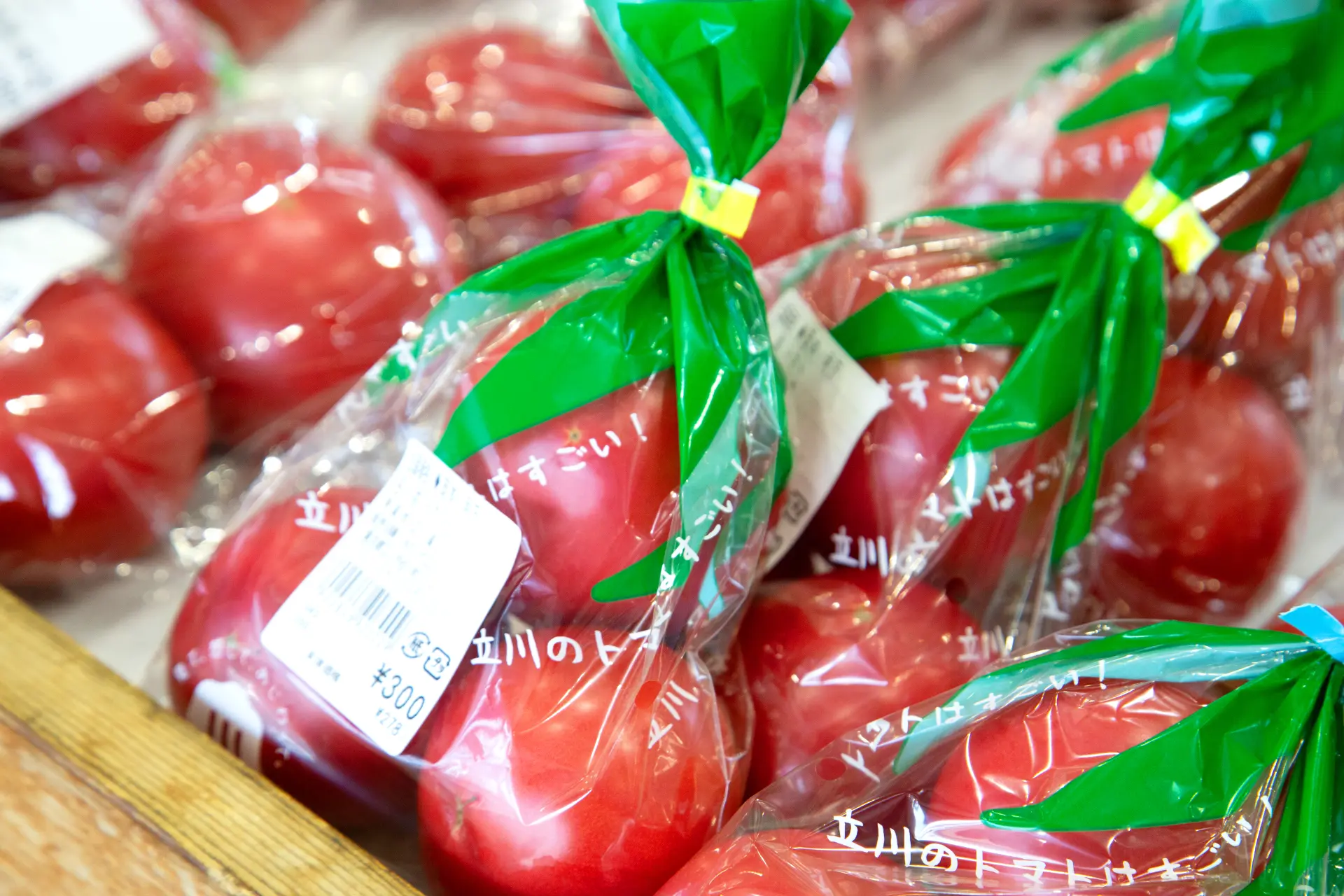
2 Spots Where You Can Enjoy Tokyo Grown Vegetables
1. Restaurants Serving “Tokyo Grown Vegetables” Prepared in the Best Ways
Even if you want to try “Tokyo grown vegetables,” their limited distribution often makes it difficult to find them in central Tokyo. In such cases, visiting restaurants that serve dishes made with Tokyo grown vegetables are recommended. These restaurants allow you to enjoy the local seasonal flavors at their best. At cafés and Italian eateries, as well as Japanese restaurants, many establishments feature Tokyo grown ingredients on their menus. Adding a taste of Tokyo’s unique “food story” to your travel experience will make it even more memorable.
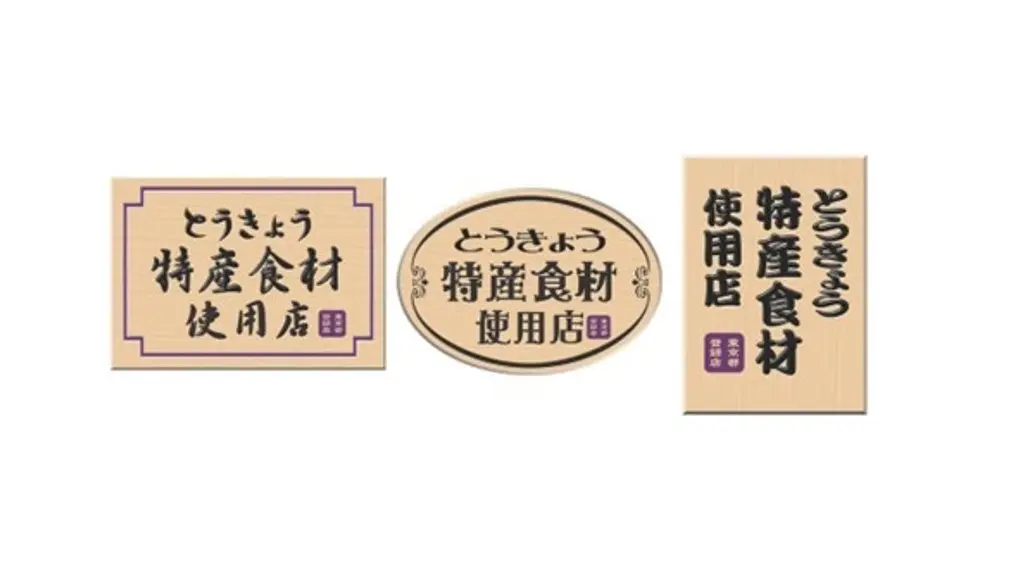
2. Farmers’ markets Selling Freshly Harvested “Tokyo Grown Vegetables” Daily
Direct sales outlets are places where producers sell their products straight to consumers, without going through wholesalers or retailers. Because they are open every day, local residents can casually purchase fresh vegetables whenever they like. The outlets offer vegetables harvested that very day, giving visitors the special experience of “shopping where you can meet the farmer,” something not possible in supermarkets.

JR Tachikawa Station is about a 10-minute drive from Farmers’ Center Minore Tachikawa, where agricultural products and processed goods from Tachikawa and the surrounding area are sold. Freshly harvested vegetables are displayed daily, providing local residents with safe and reliable food. In the café area, Tokyo black tea soft-serve ice cream is especially popular. Each direct sales outlet has its own unique character, so be sure to stop by during your sightseeing and experience the different atmospheres they offer.
Efforts by the Tokyo Metropolitan Government to Share “Tokyo Grown Vegetables” with the World
As part of efforts to showcase Tokyo’s hidden abundance, the Tokyo Metropolitan Government organized the first-ever Tokyo Local Food Trivia Tour in the summer of 2025. Participants included tour guides and international students. Let us introduce the activities of this experience and the appeal of “Tokyo grown vegetables” as felt by the participants.
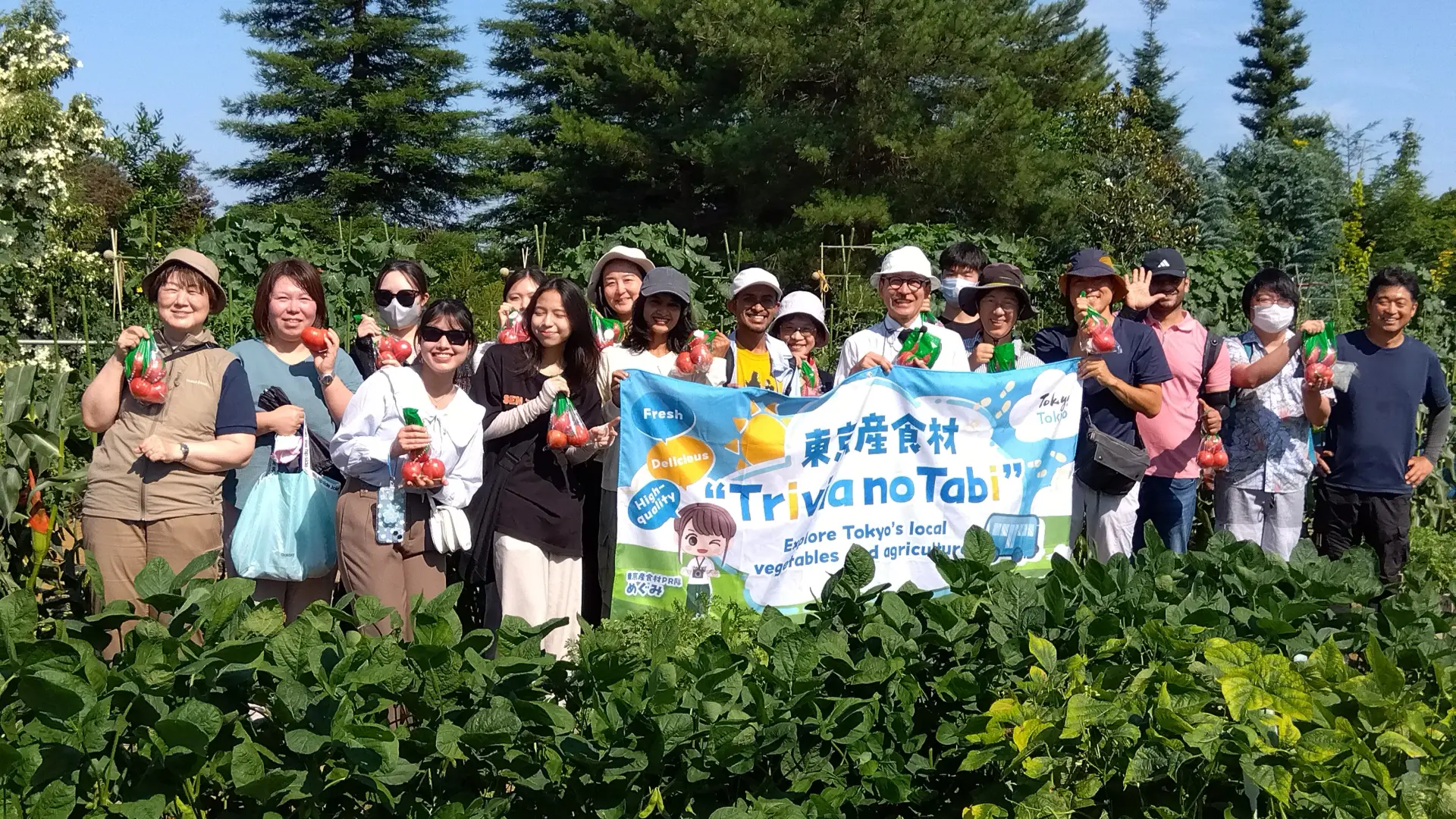
Visiting Farms and Harvesting Summer Vegetables
While farm experiences are a trend nationwide, in Tokyo they are often combined with educational elements, which makes them distinctive. One such example is Mr. Yutaka Toyoizumi, who operates Smile Farm-School of Food and Agriculture in the Forest in Tachikawa City, a family farm with a history spanning ten generations. In addition to producing vegetables for consumers and school lunches, he also runs hands-on farms where visitors can enjoy planting and harvesting together, and harvest-experience farms where guests can pick vegetables themselves. During the tour, participants harvested eggplants, carrots, and tomatoes at this farm.
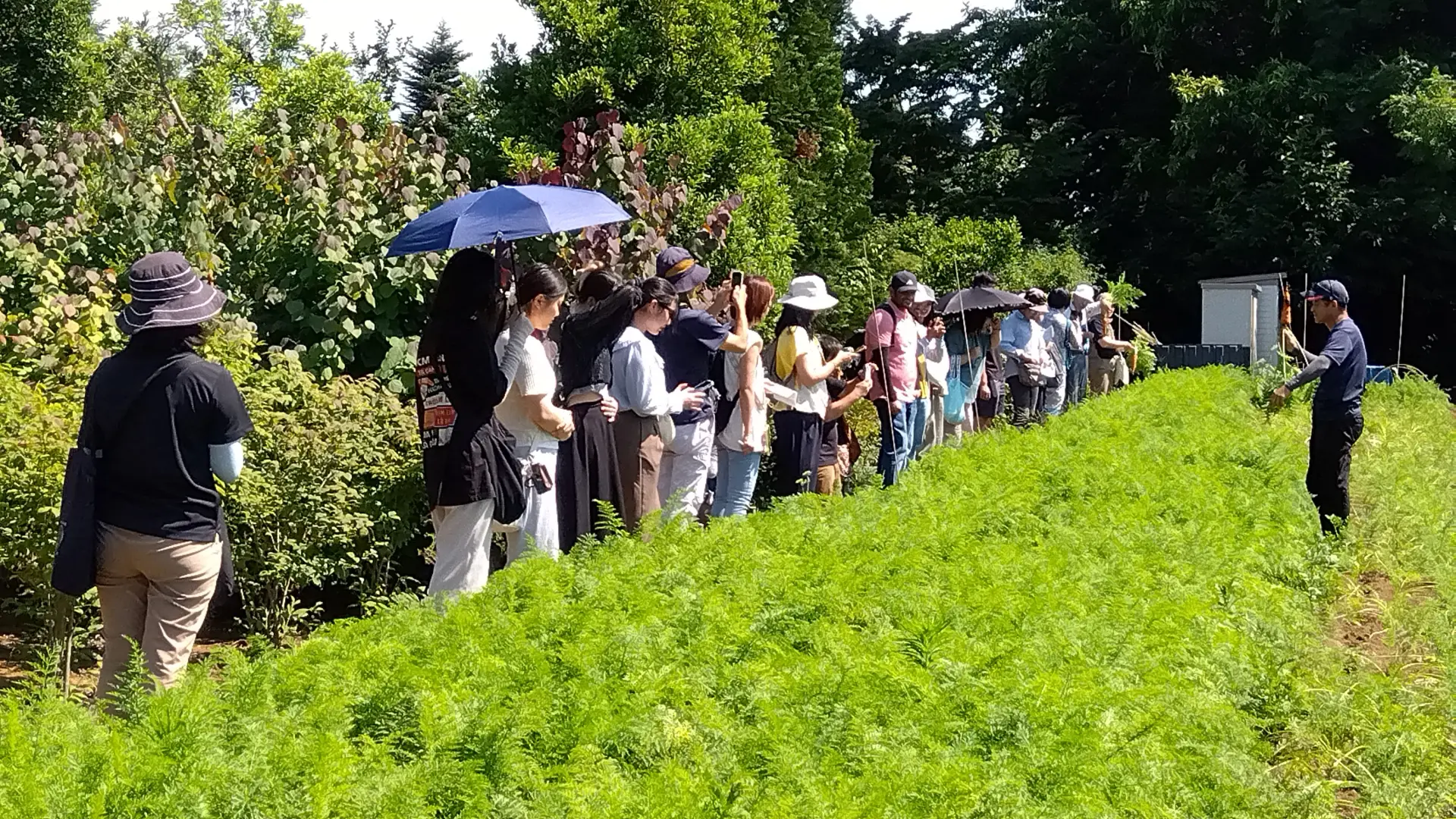
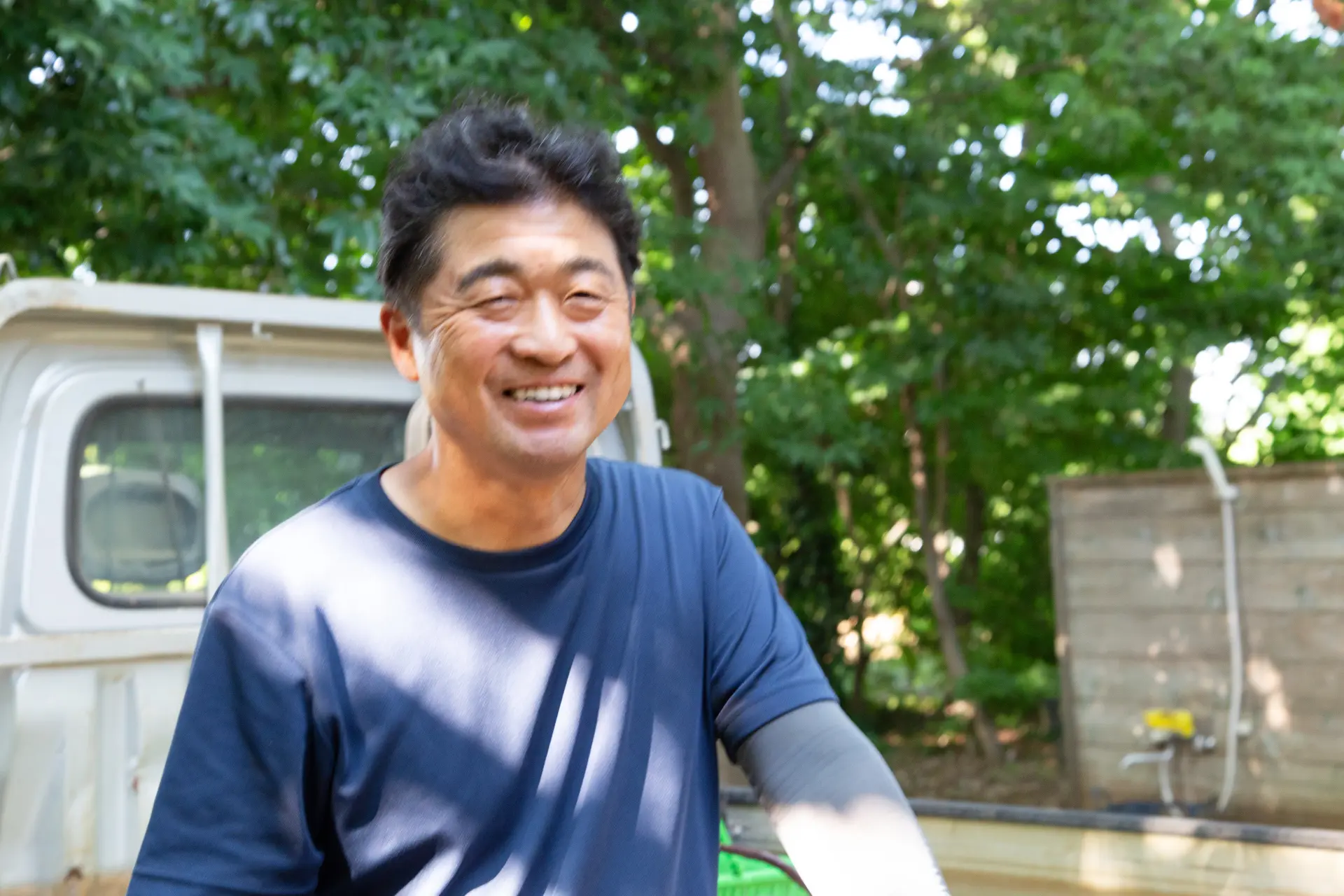
“When you actually try harvesting carrots, you realize that many of them are not perfectly shaped. That’s something you won’t know unless you visit the farm and experience it firsthand. I believe it’s important to start by understanding that,” Mr. Toyoizumi explains. The hands-on farming program originally began in response to requests from local residents. Now in its 18th year, it has become a place where people of all ages-from children to the elderly-can easily engage with and learn about farming.
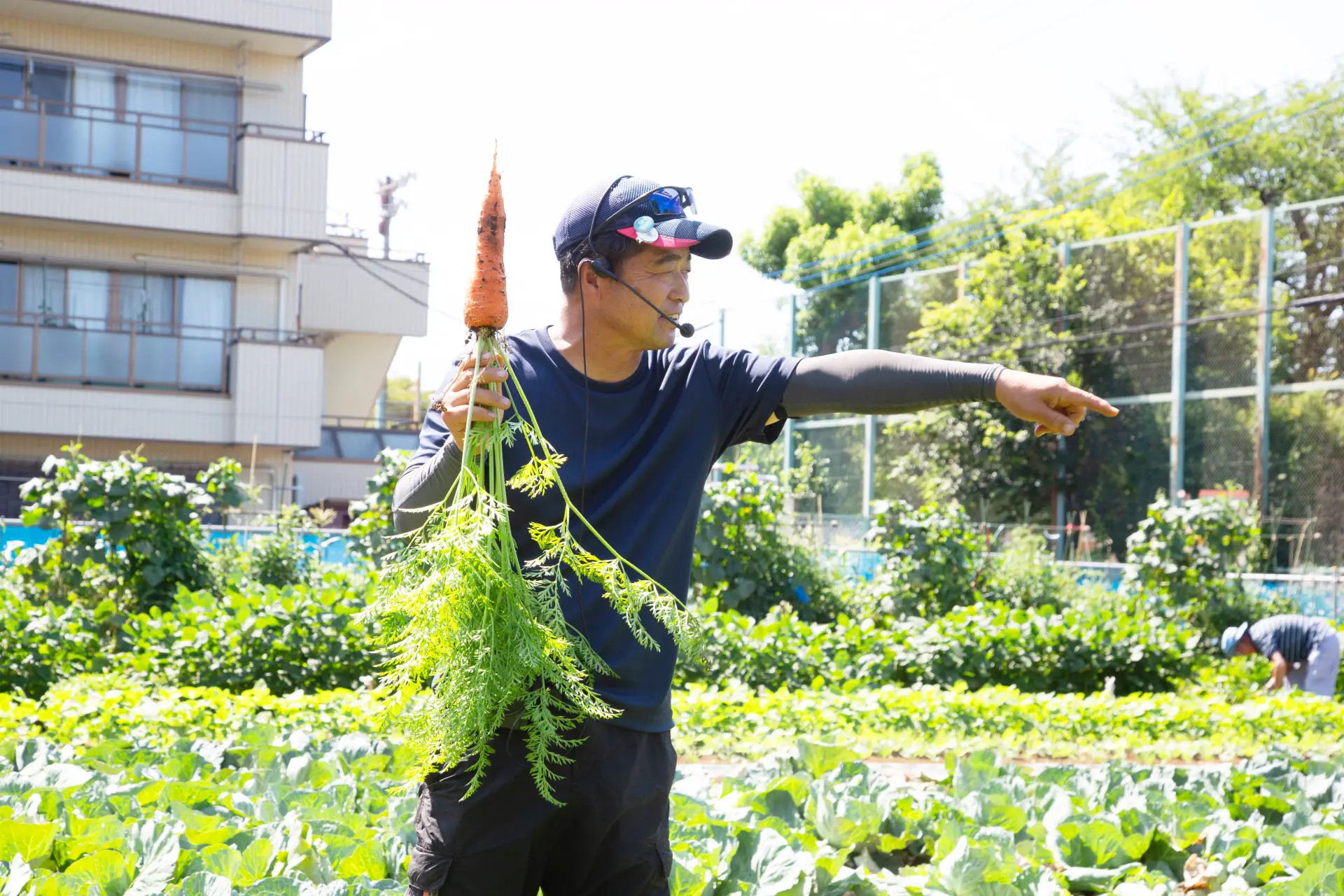


The international students who took part in the tour were astonished to discover that so many fields exist so close to central Tokyo, and that they could harvest such fresh vegetables right there.
Tasting Summer Vegetables
At the dining hall adjacent to the farm, participants sampled dishes made with plenty of freshly harvested summer vegetables. The menu included recipes that anyone could easily prepare and enjoy, as well as dishes unique to farming families who always have an abundance of vegetables on hand.

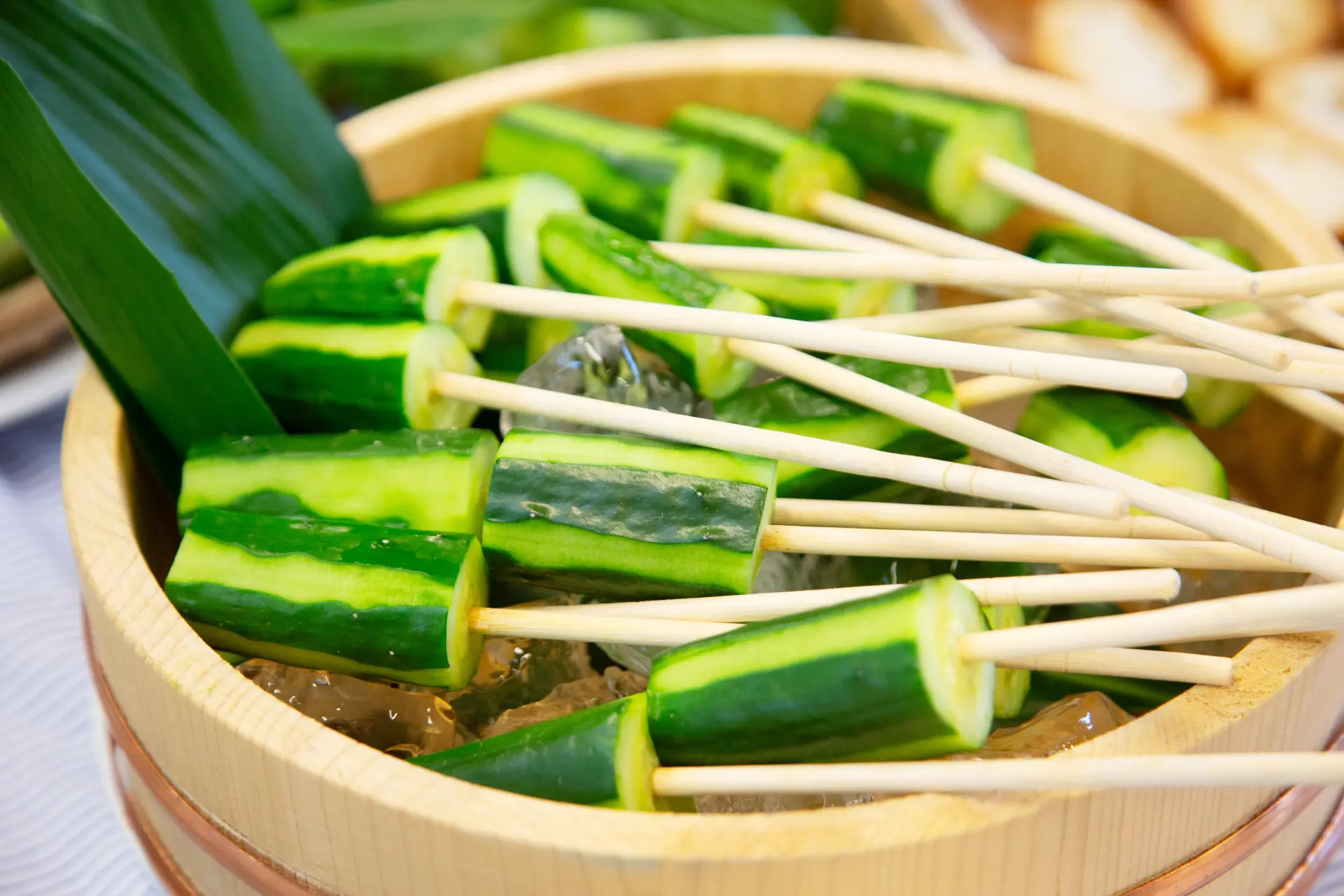
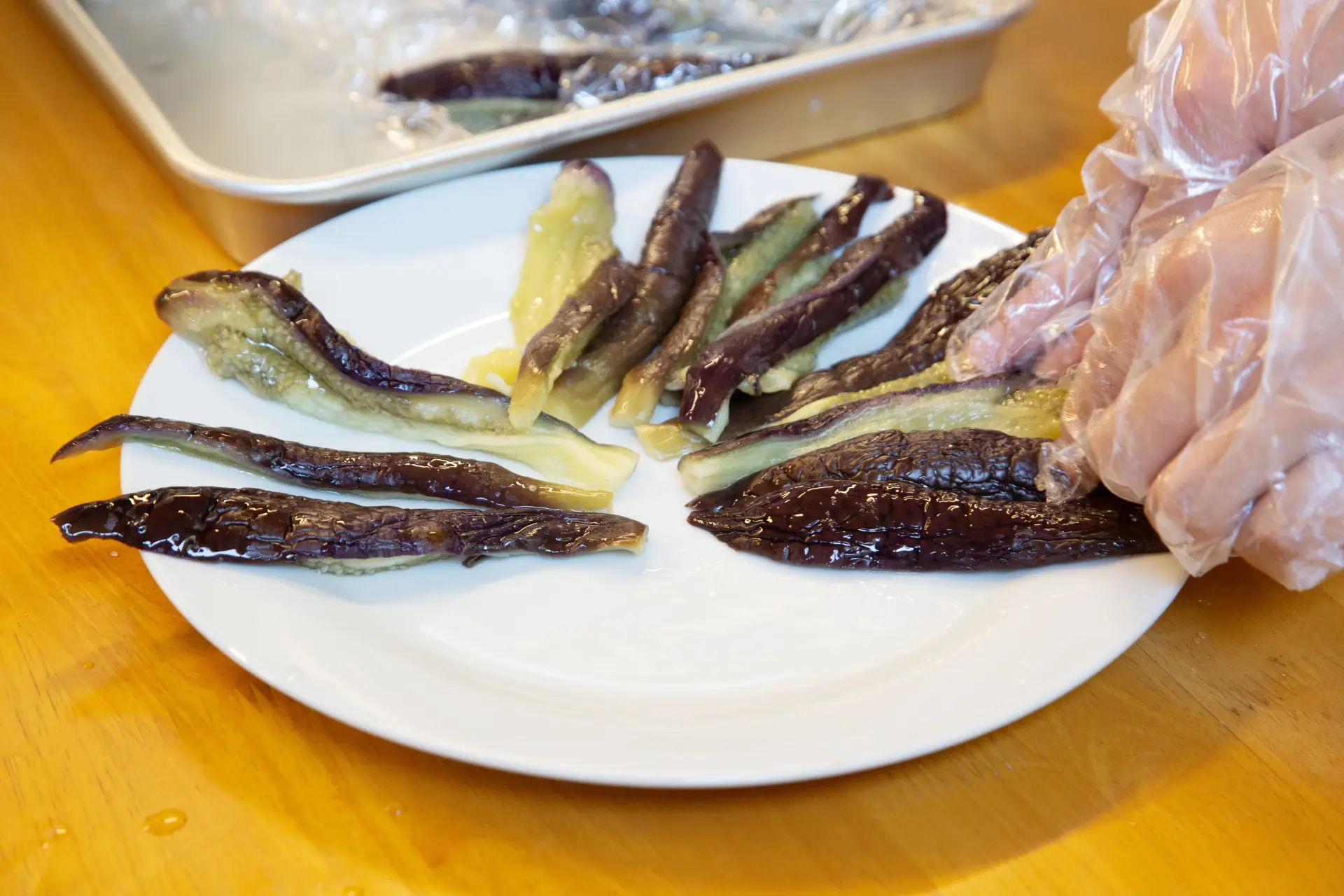
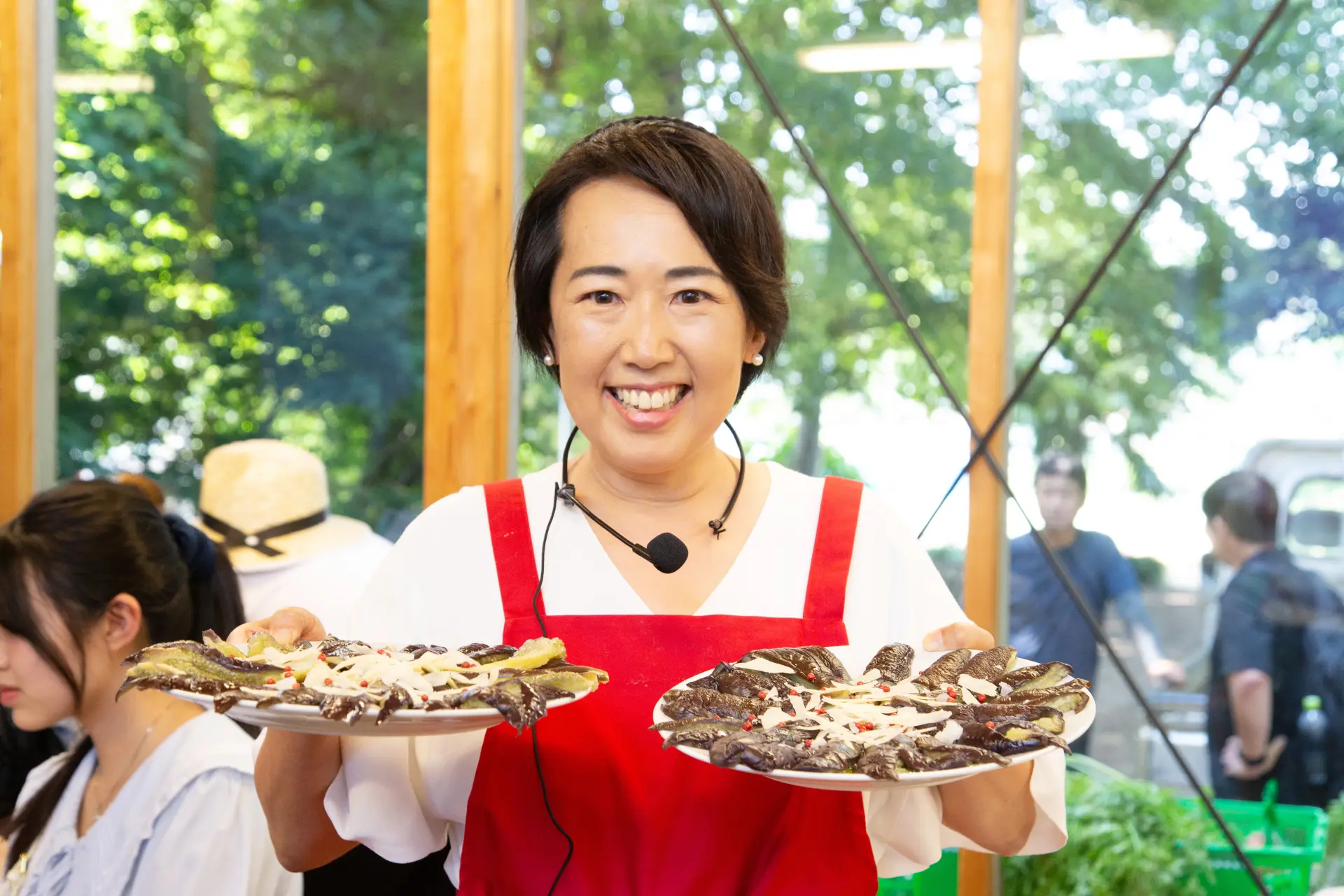
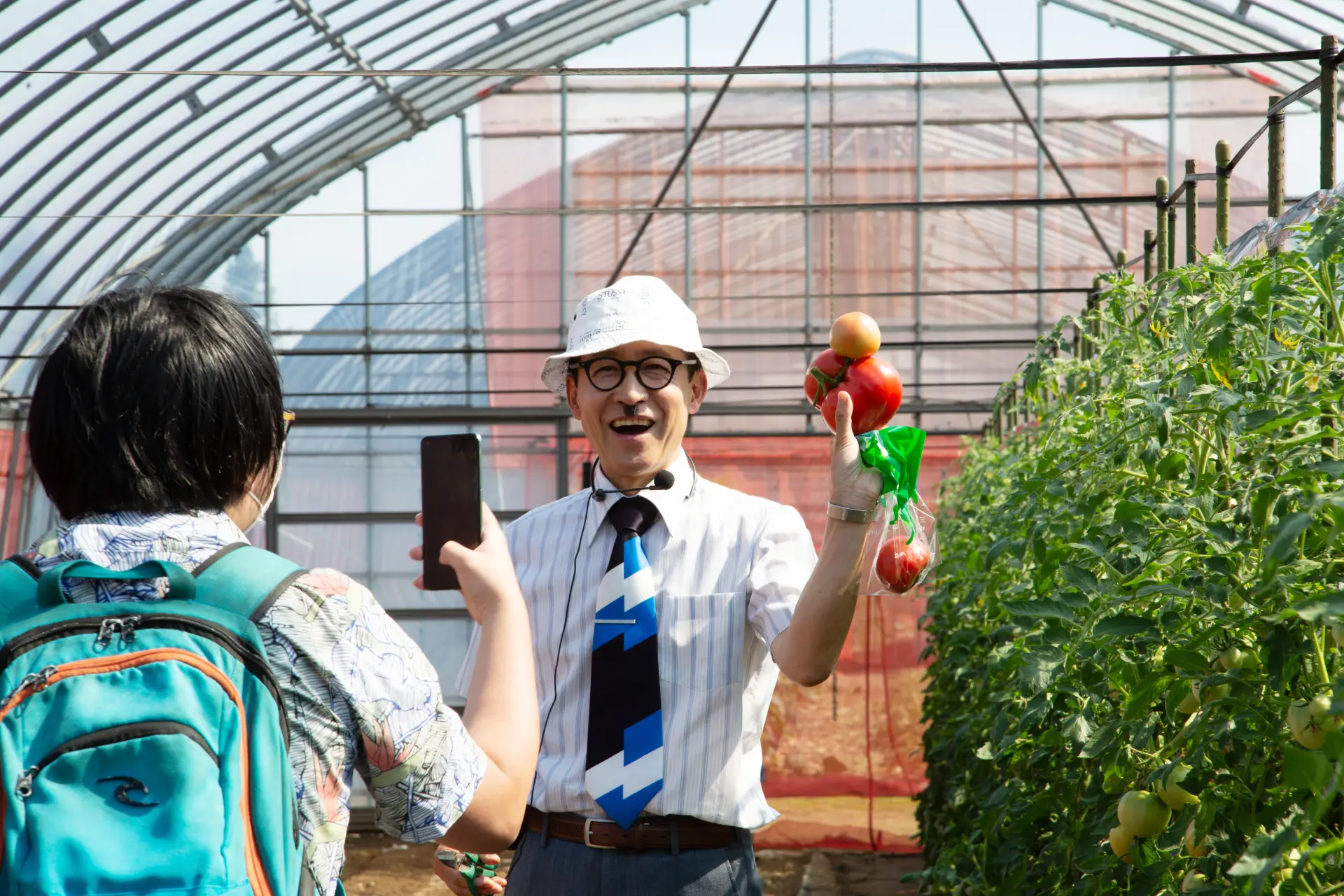
Each vegetable dish showcased the rich flavors and textures of the ingredients themselves, and participants unanimously agreed that this was precisely the appeal of “Tokyo grown vegetables.” Some even said that after experiencing the tour and discovering their deliciousness, they began buying Tokyo grown vegetables to enjoy at home.
The Tour Concludes with Souvenir Shopping at a Direct Sales Outlet
To wrap up the half-day tour, participants visited Farmers’ Market Minore Tachikawa, a direct sales outlet where local vegetables and processed goods are sold. There, they learned that Tokyo grown ingredients can be easily purchased nearby. Because they had received so much knowledge from farmers throughout the day, participants eagerly searched for vegetables at the market, making the shopping experience an even more engaging part of the tour.
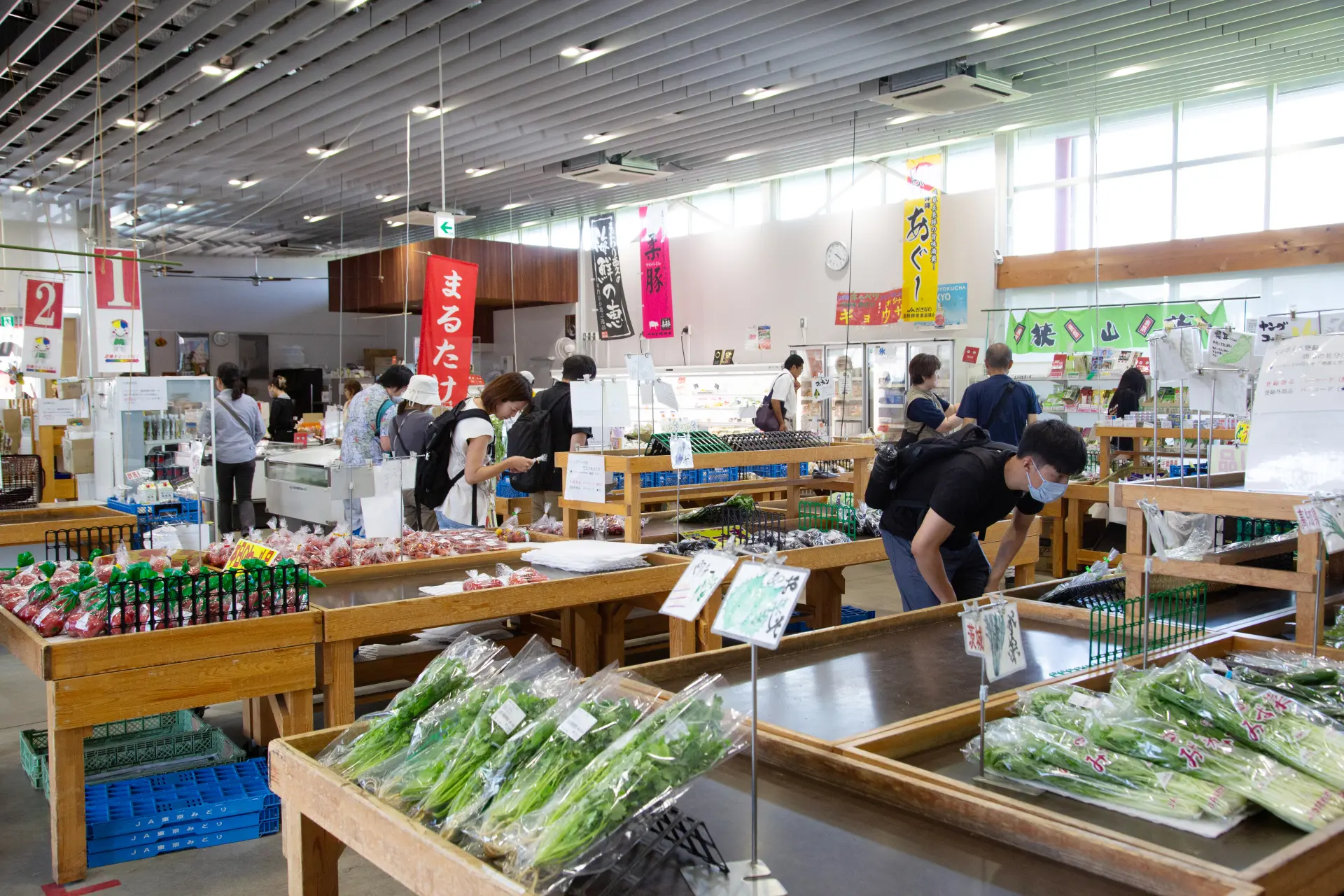
The Tokyo Metropolitan Government plans to hold the second Tokyo Local Food Trivia Tour in the fall of 2025. The next event is scheduled to focus on traditional vegetables such as komatsuna.
Official FAQs
Q
Besides vegetables, what other local specialties does Tokyo have?
Tokyo also offers delicious meat, fish, fruits, Japanese tea, and various processed products. For more information about Tokyo’s specialties, see here.
Q
Where can I buy “Tokyo grown” products as souvenirs?
Recommended places include the “TOKYO GIFTS 62” souvenir corner at the Tokyo Metropolitan Government Building, the “Agriculture promotion facility, JA TOKYO” located near Shinjuku Station, and the “Antenna shopTOKYO ISLANDS” at Takeshiba Ferry Terminal, about a 10-minute walk from Hamamatsucho Station, which specializes in souvenirs from the Tokyo Islands.
Wrap-up
Just beyond the bustling city, Tokyo is blessed with rich nature and thriving agriculture. Fresh and delicious vegetables, cultivation with a focus on quality, and the reassuring presence of producers whose faces and names are visible-all of these elements make Tokyo grown vegetables uniquely appealing. When traveling in Tokyo, be sure to visit restaurants and direct sales outlets that offer Tokyo grown vegetables, and experience Tokyo’s unique “food story” for yourself.
